Day 1: Monday, May 16, 2022
Plenary 1 9:00-9:35
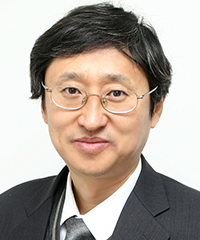
-
Prof. Seung Ki Sul
Seoul National University, KoreaPresentation Title
Realistic Simulation of Traction Motors in the Power Train of Electric Vehicle
-
Biography
Seung-Ki Sul (S’78–M’87–SM’98–F’00 IEEE) received the B.S., M.S., and Ph.D. degrees in electrical engineering from Seoul National University, Seoul, South Korea, in 1980, 1983, and 1986, respectively. From 1986 to 1988, he was an Associate Researcher with the Department of Electrical and Computer Engineering, University of Wisconsin, Madison, WI, USA. From 1988 to 1990, he was a Principal Research Engineer with LG Industrial Systems Company, South Korea. Since 1991, he has been a faculty member with the School of Electrical and Computer Engineering, Seoul National University, where he is currently a Professor leading the Power Electronics Lab. of Seoul National University. He has authored or coauthored more than 160 IEEE journal papers and more than 350 international conference papers in the area of power electronics. His current research interests include position sensorless control of electrical machines, electric/hybrid vehicles and ship drives, and power-converter circuits based on SiC MOSFET.
Dr. Sul was the Program Chair of IEEE Power Electronics Specialists Conference in 2006 and the General Chair of IEEE International Conference on Power Electronics and ECCE-Asia in 2011. From 2011 to 2014, he was the Editor-in-Chief for the Journal of Power Electronics, an SCIE-registered journal published by the Korean Institute of Power Electronics (KIPE). For the year 2015, he was the President of KIPE. He was the recipient of the 2015 IEEE Transaction 1st and 2nd Paper Awards simultaneously on Industrial Application. He was also the recipient of the 2016 Outstanding Achievement Award of the IEEE Industrial Application Society. He was also selected as the recipient of the 2017 Newell award sponsored by IEEE Power Electronics Society. For the last forty years of R &D activities, he has been involved in over 150 industry-sponsored collaboration projects in elevator drive, steel mill plant, home appliance, PCS of renewables, electric/hybrid vehicles, and ship propulsion.Abstract Before the end of this decade, electric vehicles (EV) shall dominate internal combustion engine (ICE) vehicles. EV is not only beneficial to the environment but also the cost of total ownership of EV would be cheaper than ICE vehicles. Hence, along with the rapid spread of EV, the importance of the electric traction motors, mainly the permanent magnet motor or the induction motor, will be getting stronger. Because of the cost and efficiency issue, the traction motors in EV power trains are smaller and magnetically more saturated. And, the conventional model of motors, based on the harmonic free linear magnetic circuit, does not apply to extreme operating conditions of the traction motor. Due to the irrelavance of the model, the control algorithm of the motor based on the conventional model could not give satisfactory control performance. Computer simulation has been an essential tool to design the power train, and the traction motor is a critical part of the power train. To simulate the performance of the power train, in the motor control engineeers, a realistic model of the motor has been needed. This talk will introduce a realistic model of the traction motor considering magnetic saturation, cross saturation, and spatial harmonics. It will be shown that the model can be built on Finite Element Analysis (FEA) of the motor. Or it can also be built on the test results with the Motor-Generator test set. The difference in performance between a conventional model and a realistic model of typical traction motors will be discussed from the viewpoint of motor control. Based on the model, the technology for the real-time emulation of the motor will be addressed, and its performance will be demonstrated. Besides the permanent magnet motor as a traction motor, the realistic model of an induction motor based on static Finite Element Analysis (FEA) will also be introduced. With this model, considering most magnetic abnormalities, the induction motor drive system can be simulated in real-time. The comparison between experimental test results and simulation results of a commercial induction motor will be shown and discussed.
Plenary 2 9:35-10:10
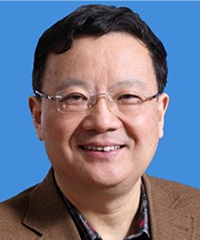
-
Prof. Zhengming Zhao
Tsinghua University, ChinaPresentation Title
Discrete State Event-Driven Modeling and Simulation for Power Electronic Systems
-
Biography
Dr. Zhengming Zhao has obtained his bachelor and master degree from Hunan University in 1982 and 1985 respectively, and Ph.D from Tsinghua University in 1991, all in Electrical Engineering. Then he joined the faculty of Tsinghua University till now, during which he worked on postdoctoral research in USA, in the Ohio State University and University of California at Irvine in 1994-1997; and then senior visiting scholar and research professor successively in University of British Columbia and University of Hong Kong in 1998-1999. He is currently the professor of Department of Electrical Engineering in Tsinghua University. He is also the Vice Chairman of both Power Electronics Society of Chinese Electrotechnical Society and Beijing Power Electronics Society. He is IEEE Fellow and IET Fellow. Dr. Zhao also serves as Editor-in-Chief, Vice Editor-in-Chief and Associate Editor for some important International and national Journals and Transactions. His main research areas include high-power electronics technology, grid-connected photovoltaic power generation application, motor drives, and wireless power transfer.Abstract
With the aggravation of global energy and environmental crisis, renewable energy has been widely used, which means that a large number of power electronic converters are used in modern power grids. This presentation firstly introduces the background and challenges of modeling and simulation of power electronic systems for modern power grid. All the challenges can be summed up in the modeling and simulation of the transient process of switching devices. The main problem is that the solution time is long and the solution divergence is easy to occur. How to analyze the transient process is further discussed, and a new power device transient model and a novel method for the simulation of the power electronic system are proposed, which is called Discrete State Event Driven (DSED) simulation method.
piecewise analytical transient (simply called PAT) model is presented, which includes important characteristics, such as overshoot, delay, loss, di/dt & dv/dt, and so on. The methodology is called time-slicing-based decoupling. All parameters are available from device datasheet. It is high efficiency with significant speed-up and improvements in stability.
hen considering power electronic systems are the typical hybrid dynamic systems, continuous states mean physical state variables (e.g. VC and iL) and discrete events mean e.g. switching events of power semiconductor switches. For this, the DSED simulation method is proposed, which is accurate and efficient simulation of power electronic systems numerical algorithm with flexible integration of continuous states, and simulation mechanism is efficient locating of discrete events.
Conventional simulation method usually is called as time-discretization mechanism with computationally burdensome, and time-stepping integration method with less flexibility. And DSED simulation method is called event-driven mechanism with avoiding unnecessary iterative calculations for event locating, and discrete state with adaptive integration and less computational costs.
This presentation introduces the principle and characteristics of the method in detail, and exhibits the typical applications and demonstrations. Compared with conventional simulation calculating, the average calculating speed of the method increases two orders of magnitude and there is no divergence problem. The method has been developed to becoming into universal software called DSIM for power electronics simulation, which has been increasingly used in the world.
Plenary 3 10:10-10:45
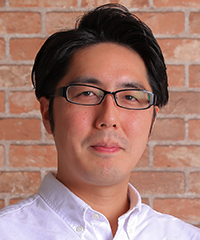
Dr. Takahiro Mizoguchi
Motion Lib, Inc., JapanPresentation Title
Academic research results in use; a case in real-haptics
-
Biography
Work Experience
2016 - present
Motion Lib, inc. President, CEO
2015 - 2018
Kanagawa Institute of Industrial Science and Technology, Researcher
2014 - 2015
JSPS, Research Fellowships for Young Scientists
Education
PhD in Engineering, Keio University, Japan 2014
M.A in Engineering, Keio University, Japan 2012
B. A in Engineering, Keio University, Japan 2010Abstract
Aging society is one of the well-known serious problems today. Especially in Japan, the problem is becoming severe very fast. The shrinkage of the population is forecasted to drop to 88 million by 2065. At the same time, number of elderly people in the population are growing fast. The anticipated result will be 40% decrease in working population.
To reinforce the labor force, robots are expected to work for the human, literally in the human like manner. The problem is that robots currently used in many sites do not have the function of controlling force with touching sense like humans. This is a major obstacle for robots to perform dexterous tasks.
The technical background of the robotics technology is originated from machine tools. The main objective of machine tools is to manufacture accurate object with precise trajectory control. Therefore, robot control, which has evolved based on this technology, is good at precise position control. In the production line the characteristic and the size of the objects can be standardized, which led position-controlled robots to huge success.
However, when robots are required to perform human-like tasks in human-like surrounding environment, adaptability to the environment becomes essential instead of performing routine tasks for standardized environment. In addition, safety becomes more important when working in collaboration with humans.
In order to overcome such difficult technology demands, an approach to transfer human motion and human skills to robots is necessary. Real-haptics is one of the effective approach to achieve human-like motion in robots. The human motion can be recorded, transferred, edited, and reproduced by combining motion control technology and dynamics to quantitatively expresses human motion. With the technology, robots can perform tasks like humans with data that is acquired from humans.
This talk will introduce the activity we have been working on to widespread real-haptics technology in commercial use. Motion Lib, Inc. is established to implement real-haptics in the society as business. Real-haptics is an academic research result and cutting edge technology. It is important to increase usability for practical implementation. We have developed Real-haptics controller AbcCore for easy implementation of the technology. We have provided AbcCore to more than 60 companies / institutions, for research and development of products. The research projects have been carried out in a wide range of fields such as manufacturing, agriculture, construction, entertainment, and medical care.
Day 2: Tuesday, May 17, 2022
Plenary 4 16:55-17:30
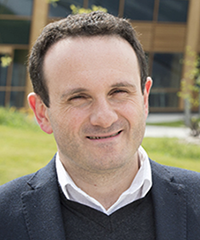
-
Prof. Chris Gerada
University of Nottingham, UKPresentation Title
Advanced Electrical Machines and Drives for Net Zero Transport
-
Biography
Prof. Chris Gerada obtained his PhD in Numerical Modelling of Electrical Machines from the University of Nottingham, UK in 2005. He subsequently worked as a researcher at the University of Nottingham on high performance electrical drives and on the design and modelling of electromagnetic actuators for aerospace applications. He was appointed as Lecturer in Electrical Machines in 2008, an Associate Professor in 2011 and Professor in 2013. His core research interests include the design and modelling of high performance electric drives and machines. Prof. Gerada established and is the director of the UK Electrification of Aerospace Propulsion Facilities and has also led a number of major research consortiums and centres. He has secured >£30M of research income as PI and has a very strong track record of industrial engagement through industrial projects and consultancies. He was awarded a prestigious Royal Academy of Engineering Chair in Electrical Machines, was the Chair of the IEEE Industrial Electronics Society Electrical Machines Technical Committee and an Associate Editor for the IEEE Transactions in Industry Applications. He has also held university leadership positions including Dean of the International Academy of Marine Economy and Technology, and has served as Vice-Provost for Research and Knowledge Exchange at the The University of Nottingham Ningbo Campus and as Associate Pro-Vice-Chancellor for Knowledge Exchange at the University of Nottingham.Abstract
Keeping global temperature rise below +1.5 degC compared to pre-industrialized levels is recognized by society and governments around the world to be an urgent and existential issue. It will take an enormous, concerted effort and new technologies at scale to achieve this goal. Electrification of transport systems is a key enabler in achieving this goal. There is already an unprecedented move in technology adoption, however, there needs to be an acceleration in the development of future electrical drive systems to enable a meaningful impact on the transition to sustainability. This presentation will discuss the key challenges for the electrical drive system for electrifying different transport modes including ground, aerospace and marine and potential enabling solutions which can meet the sector challenges. A number of case studies for developing electrical drive systems for future transport will be presented including examples for pushing the power density, cost, reliability and efficiency values.
Plenary 5 17:30-18:05
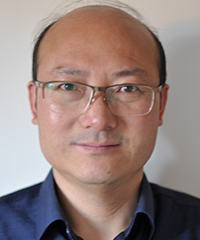
-
Prof. Wen-Hua Chen
Loughborough University, UKPresentation Title
Nonlinear Disturbance Observer Design and Disturbance Observer-Based Control
-
Biography
Dr Wen-Hua Chen holds Professor in Autonomous Vehicles in the Department of Aeronautical and Automotive Engineering at Loughborough University, UK. Prof. Chen has a considerable experience in control, signal processing and artificial intelligence and their applications in aerospace, automotive and agriculture systems. He has made significant contributions in developing nonlinear disturbance observer design techniques, disturbance observer bases control and model predictive control. His unmanned vehicles related research is widely supported by the UK government and industry. He is a Chartered Engineer, and a Fellow of IEEE, the Institution of Mechanical Engineers, and the Institution of Engineering and Technology, UK. Recently Prof Chen was awarded the prestigious EPSRC (Engineering and Physical Science Research Council) Established Career Fellowship by the UK government.Abstract
When disturbance or influence of uncertainty can be measured, its influence on the system performance could be largely attenuated by the use of a feedforward strategy. However, in many practical applications like power electronics, it is difficult to directly measure disturbance such as external load so this feedforward strategy cannot be directly realised. Disturbance observation and estimation techniques provide an alternative approach to realise feedforward strategies when disturbance or influence of uncertainty cannot be directly measured. Traditionally, disturbance observers are mainly designed using frequency domain techniques. However, they cannot be directly applied to systems with nonlinear dynamics such as robots with rotation arms. This talk outlines a disturbance observer design technique for general nonlinear systems. It is developed using the state space representation. This widely used nonlinear disturbance observer is extended to deal with more complicated disturbances such as harmonics and other high order disturbance.
his disturbance observer design technique is then integrated with a baseline linear or nonlinear controller to form a composite control scheme, which is referred as Disturbance Observer Based Control (DOBC). Compensation design for disturbance entering systems in the same or different channels of control inputs (so called matched or unmatched disturbance) is discussed. It is shown that this two-stage design process enjoys a separate principle even for nonlinear systems in the sense that the disturbance observer design can be separated from the controller design. This promising feature significantly simplifies the process of designing a control system to meet complicated and, quite often, conflict control specifications. That is, a baseline controller is designed to achieve regulation/tracking performance and closed-loop stability while the disturbance observer is used to achieve disturbance rejection and strong robustness. It is pointed out that when DOBC is employed as a robust control strategy to cope with the influence of uncertainty, the disturbance observation loop must be much faster than that of the control loop. The application of the disturbance observer design and DOBC is illustrated by a number of examples. In the first example, a nonlinear disturbance observer is designed estimate to joint friction of a robotic manipulator for friction compensation. Trajectory tracking for unmanned aircraft systems under wind and gust is considered in the second example.
Plenary 6 18:05-18:40
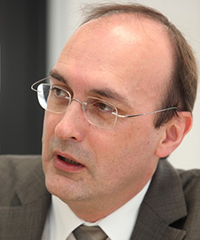
-
Prof. Rik W. De Doncker
Director E.ON Energy Research Center & Research Campus FEN, RWTH Aachen UniversityPresentation Title
Power Electronics – a key enabling technology for the European Green Deal
-
Biography
Rik W. De Doncker (M'87 SM'99 F'01) received his Ph.D. degree in electrical engineering from the KULeuven, Belgium. In 1987, he was appointed Visiting Associate Professor at the University of Wisconsin, Madison, where he developed the DAB converter. In 1988, he joined the GE Corporate Research and Development Center, Schenectady, NY. In November 1994, he joined Silicon Power Corporation (formerly GE-SPCO) as Vice President Technology, developing world’s first medium-voltage static transfer switch. Since Oct. 1996, he is professor at RWTH Aachen University, Germany, where he leads the Institute for Power Electronics and Electrical Drives (ISEA). In Oct. 2006 he was appointed director of the E.ON Energy Research Center at RWTH Aachen University, where he also founded the Institute for Power Generation and Storage Systems. He is director of the RWTH CAMPUS Cluster Sustainable Energy and leads the BMBF Flexible Electrical Networks (FEN) Research CAMPUS. He has a doctor honoris causa degree of TU Riga, Latvia. He is co-founder of several spin-offs.
He has published over 500 technical papers and is holder of more than 40 patents. Dr. De Doncker is recipient of the IAS Outstanding Achievements Award and the IEEE Power Engineering Nari Hingorani Custom Power Award (2008). In 2009, he led a VDE/ETG Task Force on Electric Vehicles. In 2010, he became member of the German National Platform for electro-mobility. He is the recipient of the 2013 Newell Power Electronics IEEE Technical Field Award, and the 2014 IEEE PELS Harry A. Owen Outstanding Service Award. In 2015 he was awarded Fellow status at RWTH University. In 2016 he became member of the German Academy of Science and Technology (ACATECH). 2017 he became Member of the International Advisory Board of French automotive research institute VEDECOM. 2020 he received the IEEE Medal in Power Engineering.Abstract
Awareness of global climate change due to the high consumption of fossil fuels has stimulated worldwide research and innovation towards a CO2-free energy supply. To realize this energy transformation the German Federal Government has initiated over the past 20 years many R&D projects to accelerate innovation. Innovation is required not only for the power generation, energy storage and the consumption side, but also, more importantly, for the energy distribution infrastructure. In all these sectors, DC power electronic energy conversion systems are needed, not only to improve efficiency, but also to save materials, thereby reducing the ecological footprint. Hence, the second part of the presentation will focus on design and production of high-power density DC converter solutions for flexible electrical grid infrastructure, in particular, on DC converters that better serve wind farms, PV systems, factories, building heating and cooling systems and fast charging infrastructure in the urban environment.
Day 3: Wednesday, May 18, 2022
Plenary 7 9:00-9:35
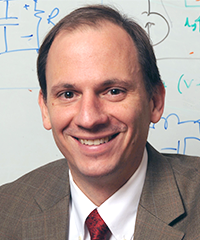
-
Prof. David Perreault
Massachusetts Institute of Technology, USAPresentation Title
Opportunities, Progress and Challenges in Piezoelectric-Based Power Electronics
-
Biography
David Perreault received the B.S. degree from Boston University and the S.M. and Ph.D. degrees from the Massachusetts Institute of Technology, all in Electrical Engineering. He is presently the Joseph F. and Nancy P. Keithley Professor of Electrical Engineering and Computer Science at MIT. His research interests include design, manufacturing, and control techniques for power electronic systems and components, and in their use in a wide range of applications. Dr. Perreault is a Member of the National Academy of Engineering, a Fellow of the IEEE and is the recipient of numerous awards including the IEEE R. David Middlebrook Achievement Award for his work in power electronics. He has co-authored fourteen IEEE prize papers in the area, and co-founded startup companies Eta Devices (acquired by Nokia in 2016) and Eta Wireless (acquired by Murata in 2021).Abstract
Magnetic components, including inductors and transformers, are often the largest contributors to the size and loss of power converters, and can be a key limiting factor in achieving improved performance. Moreover, magnetic components fundamentally scale poorly to small sizes, inhibiting dramatic miniaturization. This talk describes emerging approaches in the design of power electronics that seek to address the twin challenges of miniaturization and efficiency through the use of piezoelectric-based energy storage elements. Piezoelectric components, including piezoelectric resonators and transformers, store energy in mechanical inertia and compliance, with energy storage densities that are orders of magnitude higher than achievable with magnetics at small scales. Piezoelectrics can potentially provide radical improvements in the achievable size and efficiency of power converters for some applications, but advances in circuits, controls, passive component design and packaging are needed to fully realize these benefits. This talk will describe the opportunities, recent progress and present challenges in piezoelectric based power electronics, and provide supporting examples that illustrate the promise of this approach.
Plenary 8 9:35-10:10
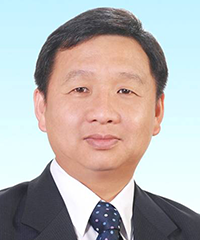
Prof. Tsorng-Juu Liang
National Cheng-Kung University, TaiwanPresentation Title
Implementation and Applications of Grid-forming Inverter with SiC for Power Grid Conditioning
-
Biography
Tsorng-Juu (Peter) Liang (Fellow, IEEE) received the M.S. and Ph.D. degrees in electrical engineering from the University of Missouri, Columbia, MO, USA, in 1990 and 1993, respectively. He is currently a Distinguished Professor with the Department of Electrical Engineering and the Director of the Green Energy Electronics Research Center, National Cheng Kung University, Tainan, Taiwan, where he was the Vice Dean of College of Electrical Engineering and Computer Science from 2016 to 2021. He is also on the Board of Directors of Catcher Technology, Taiwan. He has been on the Board of Directors of Leadtrend Technology, Hsinchu, Taiwan, Compucase Enterprise, Tainan, Taiwan, and Epileds Technologies, Tainan, Taiwan. Dr. Liang is currently the Editor-in-Chief of the IEEE JOURNAL OF EMERGING AND SELECTED TOPICS IN POWER ELECTRONICS (JESTPE), effective from January 1, 2022. He is an Energy Conversion Congress and Expo (ECCE) Asia Coordinating Committee Member and the Vice President of the Taiwan Power Electronics Association. He was honored with the Outstanding Contributions Award from the Taiwan Power Electronics Association in 2018. He has been the Chair of the IEEE Tainan Section and the Power Electronics Society’s (PELS) Technical Committee 6, the Program Chair of the 2013 IEEE International Future Energy Electronics Conference (IFEEC), the General Co-Chair of the 2015 IEEE IFEEC, and the General Chair of the 2017 IEEE IFEEC-ECCE Asia. He is also on the International Editorial Advisory Board of the IEEE TRANSACTIONS OF INDUSTRY APPLICATIONS, the Advisory Board of the Journal of Power Electronics, and the Editorial Board of IEEE TRANSACTIONS ON POWER ELECTRONICS. Dr. Liang’s research interests include high-power dc–ac and power converters for electrical vehicles and sustainable energy systems with wide bandgap devices, power ICs for power converters, and applications for power converters.Abstract
Sustainable energy technologies have become the promised solution to global warming and climate change. Operation of the electric power grid has been dominated in the past by synchronous generation, wherein conventional sustainable energy inverters are designed simply to feed maximum real power into the grid. With the increasing penetration of renewable energy, it is undergoing a rapid shift toward the power generation of inverter-based resources (IBRs). As a result, transitioning to a power grid with more IBRs requires introducing advanced inverter technology that can respond to the various disturbances in frequency and voltage that occur on the grid. The grid-forming (GFM) inverter with an energy storage system featuring frequency and voltage support functionalities is vital for the stability of micro power grid system. The GFM inverter also offers PV output smoothing, low voltage ride through, and low frequency ride through. In addition, the GFM inverter functions as a voltage source inverter to supply energy under off-grid state when main grid is in fault conditions. A SiC based 30 kVA GFM inverter is presented with 3-phase 3-level neutral-point-clamped (NPC) topology for high-frequency operation to achieve high efficiency and power density. Design challenges in gate driver design, PCB layout, and thermal consideration are addressed. The performances of the designated grid-forming inverter are measured and tested under on-grid and off-grid operations to verify the functionalities of the advanced inverter, as well.


